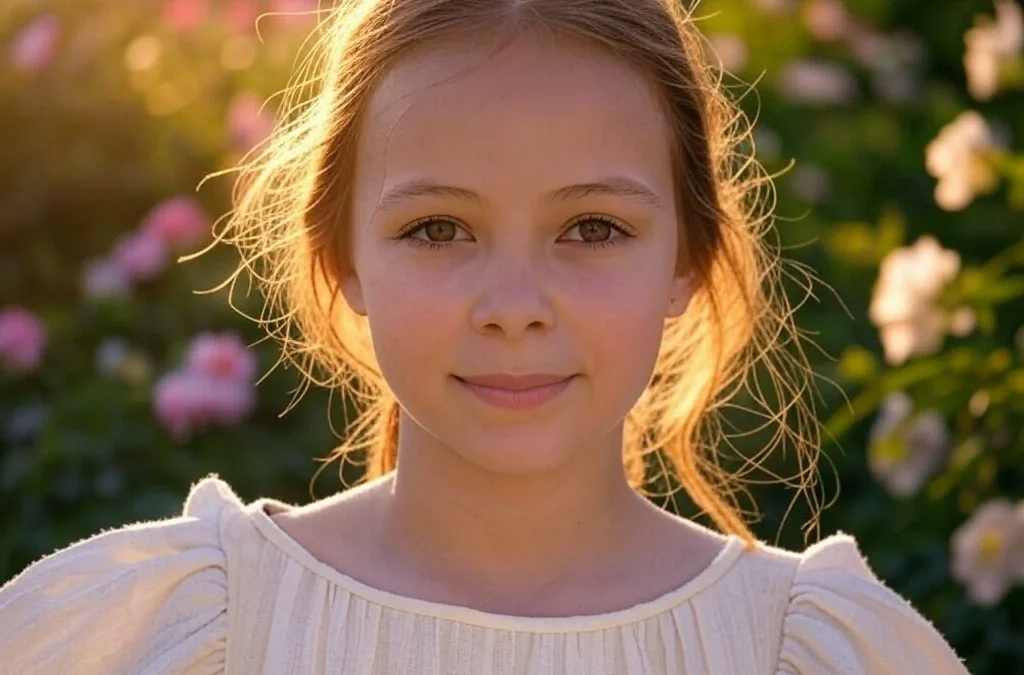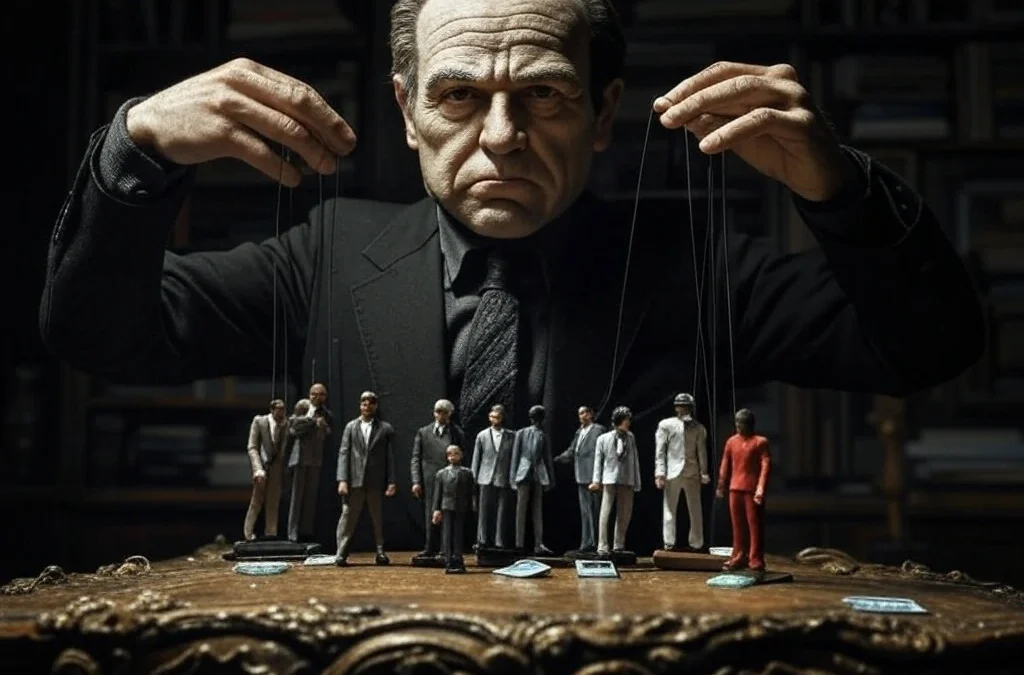High school is a place of discovery, friendships, and personal growth. But it’s also a place where students often get labeled. Whether it’s based on looks, interests, or social circles, these stereotypes shape how people interact.
Some are exaggerated, some have a bit of truth, and others are completely unfair. Yet, many students find themselves fitting—at least partly—into one of these classic high school roles.
This guide breaks down 30 of the most common high school stereotypes. We’ll look at what defines them, how accurate they are, and why they exist. But remember, real people are always more complex than labels.
The Most Common High School Stereotypes
1. The Jock
Always in team gear, always at practice. Jocks are known for their athletic skills and school spirit. Some fit the stereotype perfectly—loud, confident, maybe even a little arrogant. Others break the mold, proving that sports and academics (or kindness) can go hand in hand.
2. The Nerd
Top of the class, glasses, a love for science or math. Nerds often get labeled as socially awkward, but in reality, they’re just passionate about what they love. And in today’s world, being a nerd isn’t the insult it used to be—it’s a sign of future success.
3. The Cheerleader
Popular, energetic, and always smiling. Cheerleaders are seen as the face of school spirit. The stereotype says they’re shallow, but that’s unfair. Many cheerleaders balance tough workouts, good grades, and leadership roles.
4. The Teacher’s Pet
They always have the right answer. They remind the teacher about homework. Some classmates find them annoying, but deep down, they just want to succeed.
5. The Band Kid
Marching band, orchestra, jazz ensemble—you name it. Music is their life. Some are quiet and reserved, others are loud and quirky. The stereotype suggests they’re socially awkward, but really, they have a tight-knit group of friends.
6. The Goth
Black clothing, dark makeup, and an appreciation for the mysterious. Goths are often seen as moody or rebellious, but many are just artistic, deep thinkers who reject mainstream trends.
7. The Class Clown
Always cracking jokes, always pushing the teacher’s patience. The class clown is the one who keeps things entertaining, even if it means getting in trouble.
8. The Prep
Polished, well-dressed, and often from well-off families. Preps are seen as the kids who have it all. The stereotype paints them as snobby, but many are just ambitious and well-mannered.
9. The Rebel
Breaking rules, skipping class, challenging authority. Rebels don’t like being told what to do. They might be troublemakers, or they might just have their own way of doing things.
10. The Hipster
Vintage clothing, indie music, and a dislike for anything “mainstream.” Hipsters pride themselves on being unique. They love discovering underground trends before anyone else.
11. The Drama Kid
Always in rehearsals, always performing—even outside of class. Drama kids are expressive, loud, and passionate about storytelling. Some can be dramatic in real life too, but that just comes with the territory.
12. The Gamer
Spends free time talking about video games, playing them, or thinking about them. Gamers might be hardcore competitive or casual players, but either way, they have a deep love for gaming culture.
13. The Loner
Prefers to be alone, often lost in thought. Some loners are shy, others just enjoy their own company. The stereotype suggests they’re sad or mysterious, but many are perfectly happy flying solo.
14. The Overachiever
President of multiple clubs, straight A’s, and a mile-long resume. Overachievers push themselves to the limit. The stereotype says they’re stressed, and often, it’s true. But they also have big dreams.
15. The Skater
Always carrying a skateboard, rocking ripped jeans and Vans. Skaters are laid-back, rebellious, and always on the move. They usually have their own subculture, complete with slang and style.
16. The Hippie
Loves nature, peace, and standing up for causes. The hippie stereotype paints them as carefree and eccentric, but many are deeply passionate about environmental and social issues.
17. The Exchange Student
Comes from another country, often seen as mysterious or fascinating. Exchange students bring different cultures into the school and are sometimes stereotyped based on where they’re from.
18. The Theater Kid
Not to be confused with drama kids, theater kids take the stage seriously. They can be theatrical even in daily conversations, often breaking into song without warning.
19. The Bookworm
Always has a novel in hand, always lost in a story. Bookworms love literature and often do well in English class.
20. The Popular Kid
Everyone knows them, everyone wants to be in their circle. Some popular kids are genuinely kind, while others fit the stereotype of being cliquish and judgmental.
21. The E-Boy / E-Girl
A newer stereotype. Black clothes, dyed hair, and an online presence filled with aesthetic selfies. They’re part of a digital subculture that thrives on social media.
22. The Stoner
Laid-back, slow-talking, and always “chill.” Stoners are often assumed to be careless, but some are just relaxed personalities who go with the flow.
23. The K-Pop Fan
Obsessed with K-pop music, culture, and fashion. K-pop fans are passionate and often have online friendships with people who share their love for idols.
24. The Social Activist
Always speaking out about social issues, attending protests, and sharing awareness posts. They’re often admired but can sometimes come off as preachy.
25. The Art Kid
Sketchbook always in hand, covered in paint, always doodling in class. Art kids see the world differently and express themselves through creativity.
26. The YouTuber / Influencer
Always filming, editing, and checking their follower count. They treat high school like a content opportunity.
27. The Debate Kid
Loves a good argument. Fast-talking, quick-witted, and ready to counter any point. Debate kids are future lawyers in the making.
28. The Wannabe
Tries to fit in with different groups but never quite belongs. Wannabes switch styles, slang, and interests depending on who they’re around.
29. The Country Kid
Boots, trucks, country music, and a love for hunting or fishing. Country kids often come from rural areas and have a strong connection to nature.
30. The Wallflower
Quiet, observant, and often overlooked. Wallflowers might not stand out, but they notice everything.
Other Common High School Stereotypes
- The Rich Kid – Expensive clothes, luxury brands, latest gadgets.
- The Conspiracy Theorist – Always questioning, deep into internet theories.
- The Anime Fan – Loves anime, manga, and cosplay.
- The Gym Rat – Always at the gym, obsessed with fitness.
- The Wannabe Rapper – Writes lyrics, freestyles, dreams of fame.
- The Theater Techie – Works behind the scenes in drama productions.
- The Edgy Kid – Dark humor, sarcastic, always “different.”
- The Meme Lord – Communicates almost entirely through memes.
- The Quiet Genius – Super smart but never brags about it.
- The Student Government Kid – Loves leadership, school events, and speeches.
The Truth About High School Stereotypes
High school stereotypes are everywhere. They’re in movies, TV shows, and even the way students talk about each other. But here’s the thing—real life is way more complicated.
No one is just one thing. A football player can also love video games. A straight-A student might secretly write rap lyrics. The quiet kid in the back of the class might be the funniest person in their friend group. Labels might seem accurate on the surface, but they never tell the full story.
Stereotypes vs. Reality
Stereotypes often come from small truths, but they get stretched and exaggerated. Sure, some jocks are super competitive, but many are also hardworking, friendly, and smart. Nerds might love books, but that doesn’t mean they can’t be outgoing or athletic.
People change, too. A freshman who starts high school as a shy, quiet kid might become a confident senior who leads the school newspaper. Someone who spends all their time gaming in ninth grade might discover a love for photography later on. High school is a time for growth, and nobody stays the same forever.
Why Do Stereotypes Exist?
People naturally put others into categories—it’s just how the brain works. It makes it easier to understand the world. But when stereotypes become too strong, they can turn into unfair judgments.
Some students feel pressure to fit into a stereotype, even when it doesn’t match who they really are. A cheerleader might feel like she has to act peppy all the time. A “nerd” might downplay their intelligence just to fit in. When people feel trapped by labels, they miss out on showing their real personalities.
Breaking the Labels
The best part about high school? You don’t have to fit into a box. Friend groups mix, interests change, and sometimes the most unexpected people become close friends. The “jock” and the “band kid” might bond over a shared love of classic rock. The “gamer” and the “artist” might team up to design a video game.
At the end of the day, stereotypes might be common, but they don’t define anyone. The most interesting people are the ones who go beyond labels and just be themselves.
How to Find Your Place in High School
Starting high school can feel overwhelming, especially when it seems like everyone already has a group they fit into. But the truth is, most students feel unsure at first. Finding your place isn’t about picking a stereotype—it’s about figuring out what makes you happy and who makes you feel comfortable.
Try Different Activities
Joining a club, sport, or extracurricular activity is one of the easiest ways to meet new people. You don’t have to be a star athlete or a top musician to join a team or band. Trying different things helps you find what you enjoy and connect with people who share your interests.
Don’t Limit Yourself to One Group
Some students stick with just one friend group, but many float between different circles. You might be a theater kid who also loves sports, or a gamer who enjoys reading. Don’t let labels stop you from being part of different groups.
Be Open to New Friendships
It’s easy to assume that certain people won’t like you based on their stereotype, but that’s not always true. The “jock” might be into anime. The “nerd” might love rap music. You never know who you’ll connect with until you start talking to different people.
Stay True to Yourself
High school is a time when many people change to fit in. But the best way to find your place is to stay true to who you are. People are drawn to confidence and authenticity. If you like something, own it. The right friends will accept you for who you are.
Can You Fit Into Multiple High School Stereotypes?
Yes! In fact, most people do.
Very few students fit into just one stereotype. A football player might also be a math whiz. A cheerleader might love video games. A band kid might also be a skater on the weekends.
Why Do People Have More Than One Label?
People have different interests. You might enjoy playing sports but also love drawing. You might be super social but also need quiet time to read. High school stereotypes don’t take into account that people are multi-dimensional.
How to Balance Different Sides of Yourself
Some students worry that if they fit into multiple stereotypes, they won’t fully belong anywhere. But the truth is, having different interests can help you connect with more people. If you feel like you don’t belong to one single group, that’s a good thing—it means you have more freedom to be yourself.
Instead of trying to fit a label, just do what makes you happy. The right people will accept you for who you are.
Pop Culture & High School Stereotypes
High school stereotypes didn’t come out of nowhere. A big reason they exist is because of how movies, TV shows, and social media present high school life.
How Movies and TV Create Stereotypes
Many teen movies make high school look like a place where everyone fits into a neat little group. There’s the popular cheerleader, the mean jock, the awkward nerd, and the misunderstood rebel. But in real life, people don’t always fit into one category.
Shows like Euphoria, Riverdale, and High School Musical have influenced how people think about high school. Older movies like The Breakfast Club or Mean Girls also shaped these ideas. While they can be fun to watch, they don’t always reflect what real high school is like.
How Social Media Affects Stereotypes
On platforms like Instagram, TikTok, and YouTube, people often show only one side of themselves. Someone might seem like the “popular kid” online, but they might feel lonely in real life. Another person might come across as a “gamer” or “artist” online, but they have many other interests too.
Stereotypes can be fun in movies, but in real life, high school is more complex. Don’t feel like you have to match what you see in pop culture.
How Do I Stop People From Labeling Me?
Stereotypes are often based on quick judgments, and unfortunately, people will always have opinions. But you don’t have to let those labels define you.
1. Show Different Sides of Yourself
If people only see you as “the nerd” because you get good grades, they might not realize you love skateboarding. If they see you as “the jock,” they might not know you enjoy writing poetry. Let people see all parts of who you are.
2. Don’t Let the Labels Get to You
Some people might try to put you in a box because it makes things easier for them. But their opinion doesn’t define you. The more confident you are in who you are, the less you’ll care about what others think.
3. Make Friends Outside of Your Stereotype
If you only hang out with one type of group, people will assume that’s all you are. Try spending time with different people. This not only helps break labels but also makes high school more interesting.
4. Correct People When Necessary
If someone labels you in a way that bothers you, it’s okay to speak up. You don’t have to be rude—just casually say, “Actually, I also love playing guitar” or “I’m more than just a bookworm.” Sometimes people don’t even realize they’re labeling you until you point it out.
The most important thing? Don’t let stereotypes define you.
What Is the Most Common High School Stereotype?
There’s no single most common stereotype, but a few tend to show up in every school.
Some of the most recognizable high school stereotypes include:
- The Jock – Known for playing sports and being competitive.
- The Nerd – Focused on school and often labeled as “smart.”
- The Popular Kid – Social, well-known, and often part of the “in-crowd.”
- The Class Clown – Always making jokes and getting laughs.
- The Rebel – Goes against the rules and challenges authority.
While these are common, most students don’t fit perfectly into one group. Many people have a mix of traits, and social circles aren’t as rigid as movies make them seem.
Do High School Stereotypes Continue in College?
Not really. While social groups still exist, college is way more open.
In high school, people tend to stick to familiar groups. But in college, things are different:
- There are way more students, so people don’t label each other as much.
- Interests matter more than labels—clubs, majors, and activities shape friendships, not stereotypes.
- People mature, and high school cliques start to fade.
Some stereotypes, like “the overachiever” or “the social butterfly,” might carry over, but they don’t define people the same way. In college, no one cares if you were the class clown, the goth, or the jock. Everyone is just figuring out their own path.
If you ever feel stuck in a stereotype in high school, remember—it won’t last forever.
Final Thoughts
High school stereotypes are common, but they don’t define you. You can have multiple interests, break stereotypes, and build friendships with different types of people.
No matter how others see you, the most important thing is to be yourself. Labels don’t last, but the way you treat people and the experiences you have will shape who you become.
Read also: 20 Karma Examples: Meaning & How It Works
The Most Popular on BitGlint

40 Social Dilemma Examples in the World & Real Life
Social dilemmas are everywhere. They shape the choices we make at work, in our communities, and even on a global...

30 Favor Examples & Definition
Doing a favor means helping someone without expecting anything in return. It’s an act of kindness that can strengthen...

30 Naivety Examples & Definition
Naivety is something most people experience at some point in their lives. It often starts in childhood, but for some,...

20 Chronology Examples & Meaning
Chronology is something we use more than we realize. It shows up in conversations, in how we remember the past, and in...

30 Wishful Thinking Examples & Meaning
Wishful thinking is something we all do at some point. You hope things will turn out fine—even if there’s no real...

20 Examples of Gravity & What Gravity Really Is
Gravity is one of the most important forces in the universe, but many people don’t fully understand what it really is...

20 Examples of Secondary Consumers in the Food Chain
Secondary consumers are animals that eat other animals—usually herbivores that feed on plants. They’re an important...
Get Inspired with BitGlint
The Latest
30 Flow State Examples & Definition
Most people have felt it at some point — that rare moment when everything just clicks. You're working, moving, or thinking, and suddenly it's like the rest of the world fades out. You're focused, clear, and everything you're doing feels smooth and natural. That’s...

30 Cynicism Examples in Everyday Life & Definition
Cynicism is something most people have seen, heard, or even felt - but few stop to really think about what it means. It shows up in jokes, in conversations, and in quiet thoughts we don’t always say out loud. Some people wear it like armor. Others see it as honesty....
50 Examples of Square Things
Square things are part of everyday life, even if we don’t always think about them. From objects we use at home to tools, packaging, and design elements we see out in the world, the square shape is everywhere. It’s simple, balanced, and practical — which is exactly why...
Top 20 Absence Examples & Definition
Have you ever walked into a room and felt like something was missing? Maybe it was a piece of furniture, a familiar scent, or even the presence of a person you expected to see. Absence is a powerful concept that can shape our experiences and emotions in surprising...

